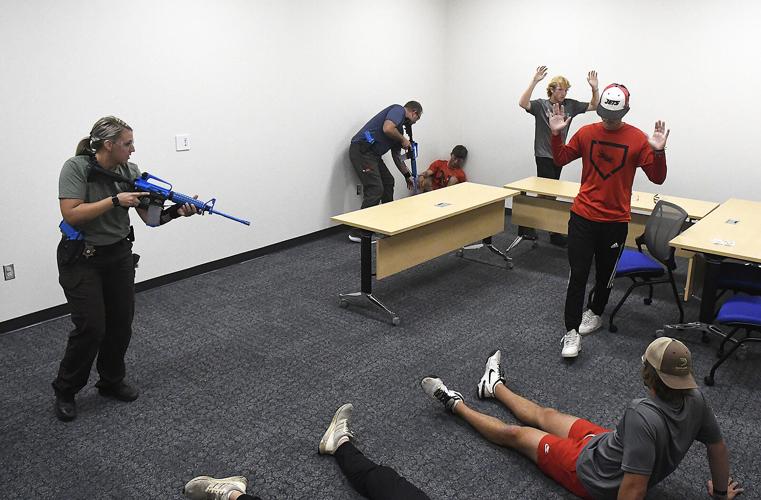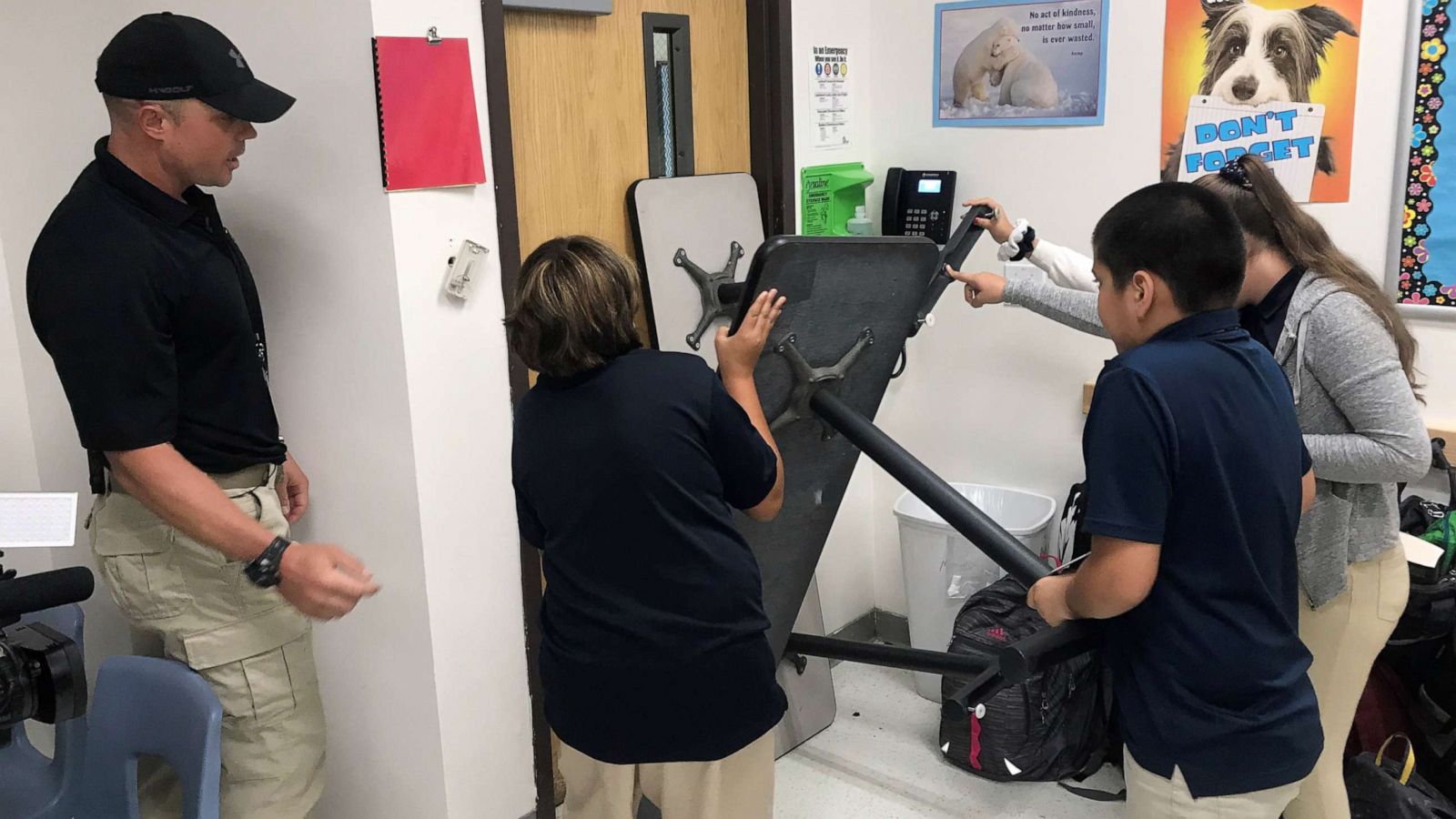Just How Active Shooter Training Can Conserve Lives in Situation Situations
Discovering the Secret Elements and Objectives of Effective Active Shooter Training Programs
Energetic shooter training programs are critical in gearing up people and organizations with the essential skills to respond efficiently to possible hazards. These programs integrate vital components, such as the "Run, Hide, Battle" approach, reasonable situation simulations, and interaction protocols, promoting an atmosphere of readiness. Furthermore, they emphasize psychological durability to assist individuals browse high-stress situations. As we check out the complexities of these training programs, it ends up being obvious that comprehending their detailed nature is crucial to improving security procedures and feedback capacities. What certain aspects genuinely define their efficiency?
Importance of Active Shooter Training
Active shooter training programs are important for improving preparedness and reaction in the face of potential hazards. These programs intend to furnish people, companies, and neighborhoods with the knowledge and abilities essential to successfully reply to active shooter situations. The raising regularity and seriousness of such cases highlight the importance of aggressive steps, as timely and enlightened actions can considerably mitigate damage.
Moreover, energetic shooter training fosters a society of safety and recognition within institutions, whether they be colleges, workplaces, or public places. Participants learn to identify early indication and recognize the importance of interaction and synergy during emergency situations. This training not only highlights specific safety yet also advertises a collective obligation to protect others.
Furthermore, these programs can help minimize the anxiousness and anxiety that commonly come with discussions regarding prospective hazards. By offering organized assistance and useful methods, individuals acquire confidence in their capability to react suitably. Eventually, the relevance of active shooter training exists in its possible to conserve lives, reduce injuries, and cultivate a ready and resistant community capable of dealing with unanticipated difficulties.
Secret Elements of Training Programs
Effective energetic shooter training programs generally integrate numerous crucial elements developed to prepare individuals for real-world situations. The initial component is extensive education on the nature of active shooter events, including stats, instance researches, and psychological aspects that affect assailants. This theoretical structure is essential for promoting understanding and understanding amongst individuals.
Following, programs frequently include training on personal security procedures, highlighting the "Run, Hide, Battle" method. Participants discover exactly how to examine their setting, make fast choices, and take proper actions during a crisis. Additionally, the inclusion of effective communication abilities is essential, as individuals should comprehend how to report cases and share essential info with legislation enforcement.
One more vital component is the involvement of police or protection specialists, that offer understandings into tactical reactions and the importance of participation throughout a crisis. Furthermore, programs need to attend to the mental consequences of an active shooter scenario, providing strategies for dealing and recuperation.
Lastly, recurring training and refresher training courses are important to guarantee that expertise stays current and participants feel great in their abilities. With each other, these key elements create a well-shaped training program that gears up people to respond successfully to an energetic shooter occasion.
Realistic Circumstance Simulations
Realistic situation simulations are an essential facet of energetic shooter training programs, providing participants with the chance to involve in hands-on technique that mirrors possible pop over to these guys real-life situations. These simulations enhance the training experience by developing an immersive atmosphere where people can use theoretical knowledge in practical settings.
With making use of role-playing, mock situations, and specialized training centers, individuals experience the immediate challenges and stressors associated with an active shooter event. This technique of training promotes quick decision-making, team effort, and the application of safety protocols under pressure. It allows responders to develop critical skills such as situational awareness, threat assessment, and reliable discharge treatments.
In addition, practical simulations aid to identify potential weaknesses in participants' feedbacks, making it possible for instructors to give targeted comments and enhance total preparedness. The unification of varying situations, including different places and assaulter profiles, better enhances the training experience, guaranteeing that participants are well-appointed to take care of a series of potential situations.
Inevitably, these simulations serve not just to instruct yet likewise to develop confidence amongst individuals, fostering a feeling of preparedness that is important for reliable emergency situation reaction in the face of an energetic shooter risk.
Interaction Approaches in Training
Clear communication is vital in energetic shooter training programs, as it directly influences the efficiency of action initiatives during a crisis. active shooter training. Training participants need to understand the protocols and procedures that will direct their actions if encountered with an active shooter scenario. Establishing clear lines of interaction makes sure that all people involved can pass on information immediately and accurately

Additionally, training programs ought to emphasize the importance of energetic listening. Individuals must be educated to translate and reply to details efficiently, minimizing misconceptions that might lead to hazardous situations. Regular responses sessions post-training can also improve communication methods, ensuring that all individuals feel encouraged to share their experiences and ideas for improvement. Ultimately, efficient communication methods are essential for preparing individuals to react emphatically and cohesively when faced with an active shooter event. additional resources

Emotional Preparedness Techniques
Emotional preparedness techniques are progressively acknowledged as important parts of active shooter training programs - active shooter training. These techniques aim to equip individuals with the mental resilience required to react efficiently in high-stress scenarios. By promoting a frame of mind in harmony with prospective threats, individuals can better take care of concern, anxiety, and complication during essential occurrences
Key emotional preparedness approaches include scenario-based training and anxiety inoculation exercises. Scenario-based training submerses participants in sensible simulations that resemble the chaos of an energetic shooter event, enabling them to practice decision-making under stress. This direct exposure aids build experience with emergency situation protocols, improving natural responses.
Stress and anxiety inoculation includes steady direct exposure to stress-inducing situations, allowing people to create coping systems. This can consist of special info breathing workouts, visualization methods, and cognitive restructuring to reframe adverse thoughts. By incorporating these techniques, training programs can grow a feeling of confidence and control, which is crucial in situation scenarios.
Moreover, post-incident psychological support is crucial to attend to the emotional aftermath of an active shooter occasion. Incorporating psychological health and wellness resources into training programs not just prepares people for instant actions but additionally promotes lasting mental health, ultimately contributing to a safer and much more resilient environment.
Conclusion
To conclude, effective active shooter training programs are important for improving preparedness and response capacities when faced with possible threats. By integrating critical elements such as sensible situation simulations, communication strategies, and emotional preparedness methods, these programs outfit individuals and organizations with the needed abilities to navigate high-stress circumstances. Eventually, a comprehensive approach to training cultivates durability and promotes a society of security, thus contributing to the general safety and security of communities in the occasion of an energetic shooter incident.